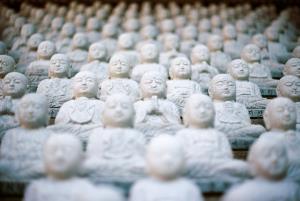
Within the Buddhist universe, every action has meaning; every object is seen as a tool for human development. Thus, in the coming weeks, I will take advantage of this valuable space to present to our readers, the meaning of some of the most important ritual objects and symbols of the Buddhist tradition.
Buddhist mala beads has become a fashionable object, being used as an ornament by models, artists, musicians, intellectuals and ordinary people. However, there are few who know its profound meaning and the use that is given to it within the contemplative practice of Buddhism.
Traditionally, the Buddhist rosary consists of 108 beads of the same size. It is used to record the recitations of mantras or words of power, endowed with deep meaning and used as a means of mental protection, against extreme ideation, mental collapse and disturbed emotions and attitudes.
The sacred number of 108 predates the rise of Buddhism, being the classical number ascribed within Hinduism to name deities or gods.
The mantras are recited for the purpose of executing the four enlightened karmas or activities: pacifying (the obstacles in the way), enriching (the potential for development), fascinate (the beings towards their awakening) and destroy. Although rosaries with several numbers of beads are frequently used in different practices of Buddhism, the one of 108 beads is the most common and popular of all.
At the end of a complete cycle of 108 recitations of the mantra, the rosary is rotated on its own axis and the next cycle of recitation begins in reverse order.

The master beads or guru at the end of the rosary - one round and the other cylindrical - symbolize the wisdom that understands the absence of inherent identity of all phenomena, as well as the absence of inherent identity of one's inherent identity.
As you can see, the universe of meaning of the Buddhist ritual objects is of great complexity and depth, symbolizing the priority deposited in the spiritual practice by the classical Buddhist civilization. How wonderful it would be that in the West, particularly in the Christian universe, the rich symbolism of their traditions was better known and better utilized.

